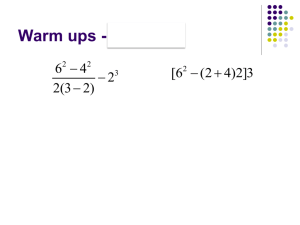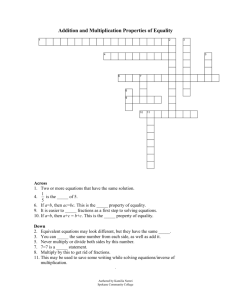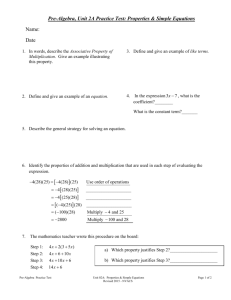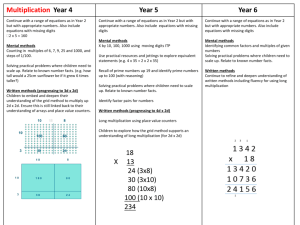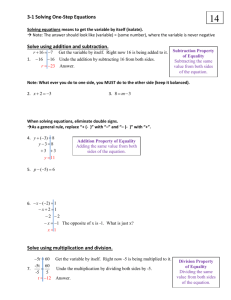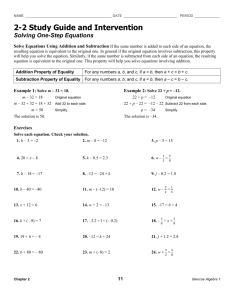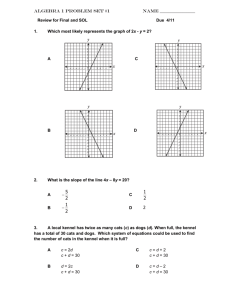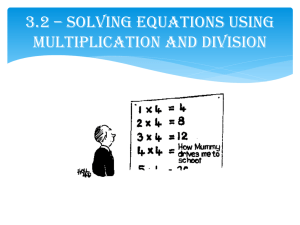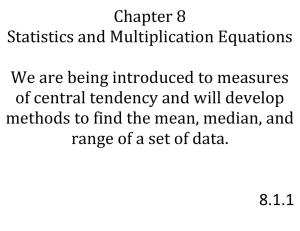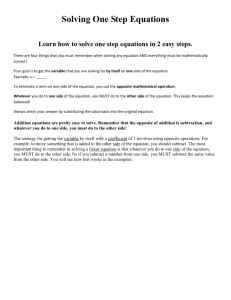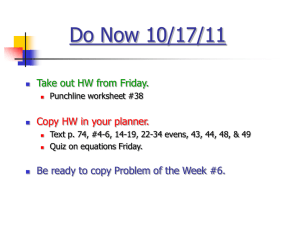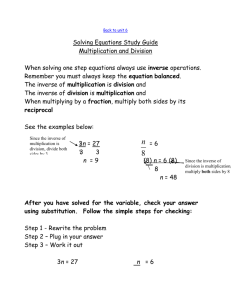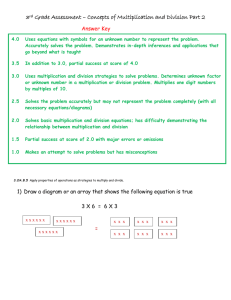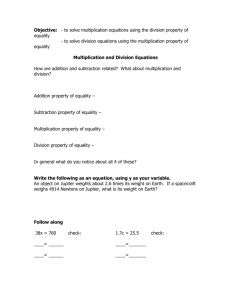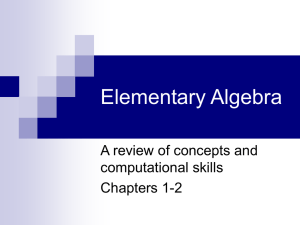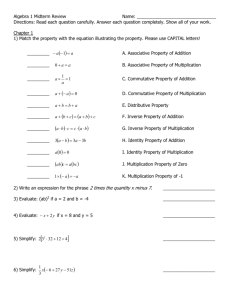Chapter 9: Basic Algebra
advertisement
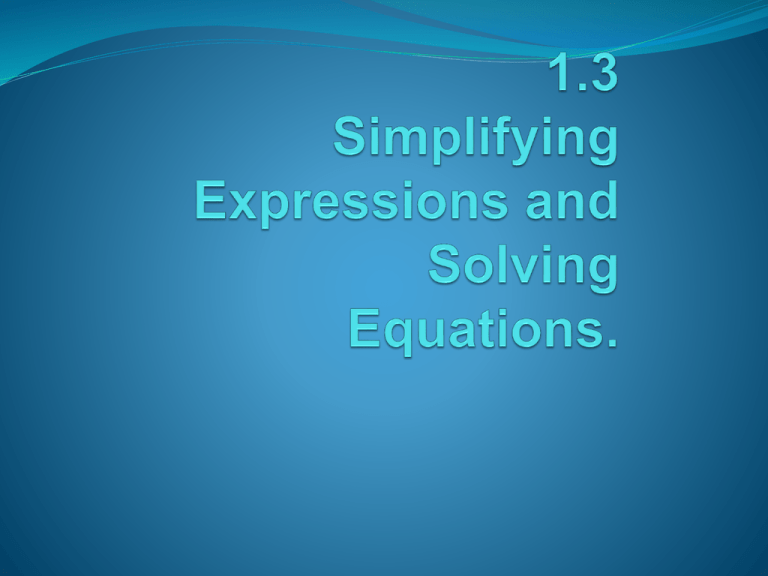
Combine Like terms Simplify • • • • 3x+2x= 3x+2y+2x+7y= 3x+5x-2= 14x+y-2x+4y-7= Slide 1- 2 Parallel Determining Whether a Number is a Example 1 Solution of an Equation Is 9 a solution of either one of these equations? a. 16 = x + 7 b. Replace x with 9. 16 = x + 7 16 = 9 + 7 16 = 16 True 9 is a solution of the equation. 3y + 2 = 30 Replace y with 9. 3y + 2 = 30 3(9) + 2 = 30 27 + 2 = 30 29 = 30 False 9 is not a solution of the equation. Slide 9.6- 3 Slide 9.6- 4 Parallel Solving Equations Using the Addition Example 2 Property Solve each equation. a. m – 13 = 28 m – 13 + 13 = 28 + 13 m + 0 = 41 m = 41 The solution is 41. To check, replace m with 41 in the original equation. Check: m – 13 = 28 41 – 13 = 28 28 = 28 The result is true, so 41 is the solution. Slide 9.6- 5 Parallel Solving Equations Using the Addition Example 2 continued Property Solve each equation. b. 5=n+7 5 + (−7) = n + 7 + (–7) –2 = n + 0 –2 = n The solution is −2. To check, replace n with −2 in the original equation. Check: 5=n+7 5 = −2 + 7 5=5 The result is true, so −2 is the solution. Slide 9.6- 6 Slide 9.6- 7 Parallel Solving Equations Using the Example 3 Multiplication Property Solve each equation. a. 6k = 54 1 6k 6 54 1 Divide both sides by 6, to get k by itself. 6 k 9 Check: The solution is 9. To check, replace k with 9 in the original equation. 6k = 54 6 ∙ 9 = 54 54 = 54 The result is true, so 9 is the solution. Slide 9.6- 8 Parallel Solving Equations Using the Example 3 continued Multiplication Property Solve each equation. b. −8y = 32 1 8 y 8 1 32 Divide both sides by −8, to get y by itself. 8 y 4 Check: The solution is −4. To check, replace y with −4 in the original equation. −8y = 32 −8(−4) = 32 32 = 32 The result is true, so −4 is the solution. Slide 9.6- 9 Parallel Solving Equations Using the Example 4 Multiplication Property Solve each equation. x a. 7 5 5 x 5 7 1 51 1 x 35 Multiply both sides by 5, to get x by itself. Check: x 7 5 The solution is 35. To check, replace x with 35 in the original equation. 35 7 5 7 7 The result is true, so 35 is the solution. Slide 9.6- 10 Parallel Solving Equations Using the Example 4 continued Multiplication Property b. 2 m 4 9 1 2 1 9 2 9 4 m 2 9 2 1 1 1 m 18 1 Multiply both sides by −9/2, to get m by itself. Check: 2 9 m 4 −2 2 18 4 9 1 The solution is −18. To 1 4 4 check, replace m with −18 in the original equation. The result is true, so −18 is the solution. Slide 9.6- 11 Here is a summary of the rules for using the multiplication property. In these rules, x, is the variable and a, b, and c represent numbers. Slide 9.6- 12 Solving an Equation with Several Steps Solve 4w + 2 = 18. Step 1 Subtract 2 from both sides. 4w 2 2 1 8 2 4w 1 6 Step 2 Divide both sides by 4. 4w 4 16 4 w 4 T h e s o lu tio n is 4 . Step 3 Check the solution. Slide 9.7- 13 Solving an Equation with Several Steps Solve 4w + 2 = 18. 4w 2 1 8 4( 4 ) 2 1 8 16 2 18 1 8 1 8 T ru e ! The solution is 4 (not 18). Slide 9.7- 14 Examples 1. 2. 3. 4. 5 3 + 9 4 7 8 − 2 3 4 2 + 5 10 13 9 − 7 5 5. 14x=0 6. −2𝑐 7 = 4 35 Slide 1- 15 Hw Section 1.3 pg 44 1-28 Slide 1- 16

